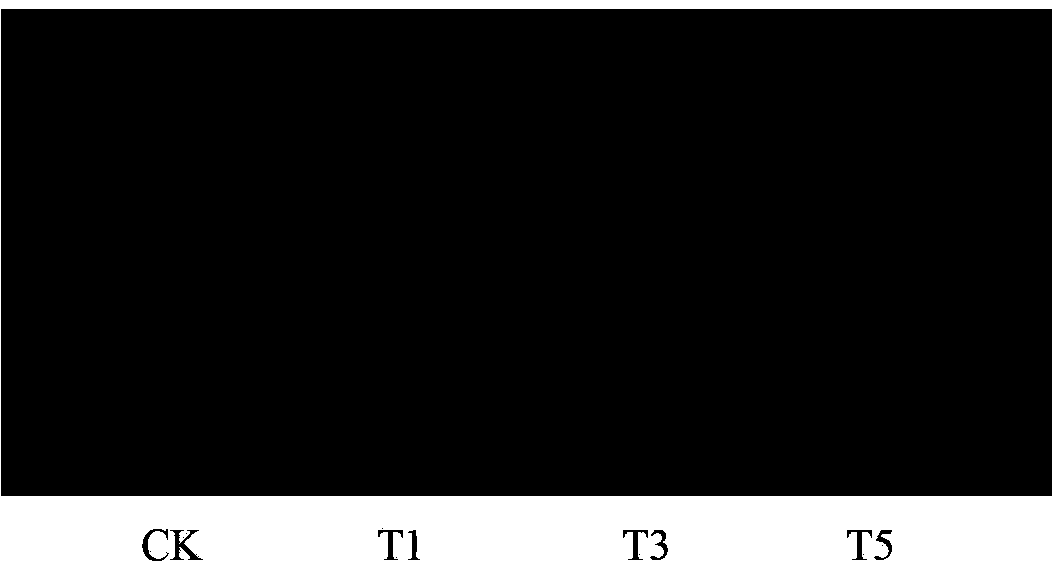Salt resistance related protein IbEST of sweet potato and coding gene and application thereof
A protein and coding technology, applied in sweet potato salt-tolerance-related protein IbEST and its coding gene and application fields, can solve problems such as affecting food production and restrictions, and achieve the effect of broad application space and market prospect.
- Summary
- Abstract
- Description
- Claims
- Application Information
AI Technical Summary
Problems solved by technology
Method used
Image
Examples
Embodiment 1
[0045] Embodiment 1, the acquisition of protein IbEST and its coding gene related to sweet potato salt tolerance
[0046] 1. Acquisition of salt-tolerance-related protein IbEST and its coding gene
[0047] Experimental material: Sweet potato salt-tolerant mutant LM79 (the public can obtain it from China Agricultural University. The non-patent literature that has recorded this material is: He Shaozhen. In vitro screening of sweet potato salt-tolerant mutants and cloning of salt-tolerant candidate genes. China Agricultural University Doctoral dissertation, 2008;) The expanded leaves of sterile seedlings were removed, quick-frozen in liquid nitrogen, and stored at -80°C.
[0048] 1. Extraction and purification of total RNA from leaves
[0049]Take about 2 g of the expanded leaves of LM79 sterile seedlings, grind them into powder in liquid nitrogen, put them into a 10 mL centrifuge tube, and extract total RNA from sweet potato leaves with the Applygen Plant RNA Extraction Kit (Ap...
Embodiment 2
[0073] Embodiment 2, the application of IbEST protein in improving plant salt tolerance
[0074] 1. Acquisition of trans IbEST tobacco
[0075] 1. Construction of recombinant vector pCBIbEST
[0076] According to the coding sequence of the sweet potato IbEST protein cDNA, the primer sequences for amplifying the complete coding sequence were designed, and the forward and reverse primers were respectively introduced into BamH I and Sac I restriction sites. The primer sequences were as follows:
[0077] Primer 11: 5' GGATCC ATGAAAGGCGTCTTCTCGG' (sequence 5) (the underlined part is the BamH I restriction site),
[0078] Primer 12: 5' GAGCTC CTATACTAAGTTTCTAAATTCCAAGCAA3' (SEQ ID NO: 6) (the underlined part is the Sac I restriction site).
[0079] Using the DNA molecule shown in Sequence 1 in the artificially synthesized sequence listing as a template (or LM79cDNA as a template), PCR amplification was performed with primers 11 and 12 to obtain a 1245bp PCR product, and the ...
PUM
 Login to View More
Login to View More Abstract
Description
Claims
Application Information
 Login to View More
Login to View More - R&D
- Intellectual Property
- Life Sciences
- Materials
- Tech Scout
- Unparalleled Data Quality
- Higher Quality Content
- 60% Fewer Hallucinations
Browse by: Latest US Patents, China's latest patents, Technical Efficacy Thesaurus, Application Domain, Technology Topic, Popular Technical Reports.
© 2025 PatSnap. All rights reserved.Legal|Privacy policy|Modern Slavery Act Transparency Statement|Sitemap|About US| Contact US: help@patsnap.com



